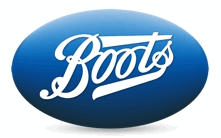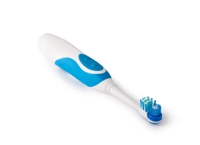 Electric toothbrushes are recommended by most dentists, as they are far more efficient at cleaning and removing plaque on teeth than just your standard toothbrush. Many even have timers that tell you when to move onto the next quadrant or when you can finish brushing, which is all ideal in helping you improve your brushing routine. Philips Sonicare, Oral B, and Colgate Pro are just a few of the great brands out there.
Electric toothbrushes are recommended by most dentists, as they are far more efficient at cleaning and removing plaque on teeth than just your standard toothbrush. Many even have timers that tell you when to move onto the next quadrant or when you can finish brushing, which is all ideal in helping you improve your brushing routine. Philips Sonicare, Oral B, and Colgate Pro are just a few of the great brands out there.
See Also: Electric Shavers & Razors
Shops With Electric Toothbrush Offers
Electric Toothbrush Buying Guide
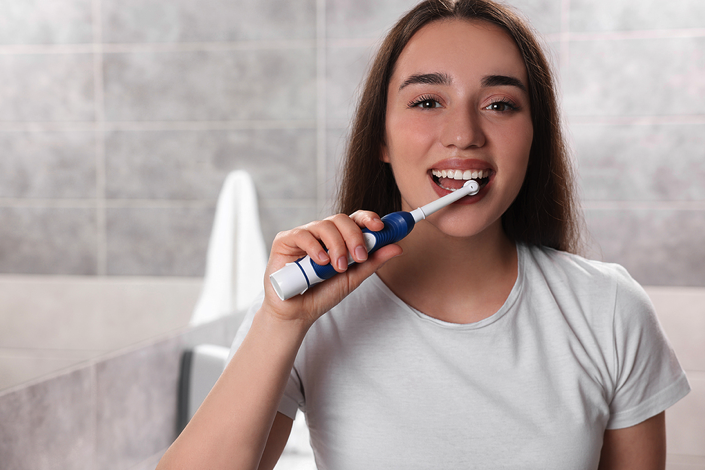
We brush our teeth at least twice a day, yet how much do we actually think about the quality of the brush we use to do it with? We’ve doubtless all used a sub-standard brush at some point or other in our lives, one we’ve picked up in Boots or Superdrug or the like. Shouldn’t we put a bit more stock in looking after our teeth? We use them every single day, after all, putting them through all sorts of challenges by asking them to chew through tough steaks, or drinking sugary drinks and coffee.
That’s why you should seriously consider investing in a decent electric toothbrush. It’s the closest you’ll get to being able to have a miniature dentist in your home, only without the risk of having your teeth drilled into and wanting to cry. A good electric toothbrush can keep your teeth in tip-top shape for a good long while.
Here, then, is our guide to help you know which electric toothbrush you should be looking to buy. We’ll tell about the sort of features you can expect to find in the various electric toothbrushes (why isn’t is it a teethbrush?) that are on the market, how they actually work and whether there’s a specific type of electric toothbrush you should be keeping your eyes peeled for.
Why Go Electric?
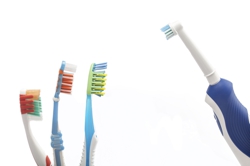 For some people the notion of ‘going electric’ brings up bad memories of Bob Dylan taking to the stage at the Newport Folk Festival with a Stratocaster in 1965. Whilst studies show that making the change from manual to electric will not necessarily be a whole lot better for you, dentists believe it will be better for your teeth than it was for Dylan 50 years ago.
For some people the notion of ‘going electric’ brings up bad memories of Bob Dylan taking to the stage at the Newport Folk Festival with a Stratocaster in 1965. Whilst studies show that making the change from manual to electric will not necessarily be a whole lot better for you, dentists believe it will be better for your teeth than it was for Dylan 50 years ago.
The reason that dentists prefer electric toothbrushes to their manual counter-part is simple: They help you to brush your teeth better. Whether you opt for a brush that spins or vibrates, you’ll find that the bristles on an electric toothbrush are much better at removing plaque than a manual alternative. That in turns means you’ll have fewer cavities and significantly more healthy gums.
Better gums and healthier teeth naturally means that your trips to the dentist will be less painful, but it also means that you probably won’t have to make a separate appointment to see a hygienist quite as often. Electric toothbrushes are also easier to brush with than manual ones. They can reach and clean teeth better, plus you only have to change the brush head when it’s time to buy a new one. They might be a pricier investment to start with, but they’ll need to be replaced less frequently once you’re up and running.
Recharge or Replace?
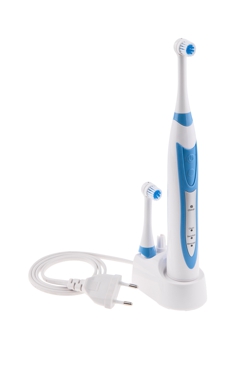 That heading could easily apply to the brush itself, of course, but we’re actually referring to the power source on offer. There are two different types of electric toothbrush that you can look for, rechargeable and battery powered.
That heading could easily apply to the brush itself, of course, but we’re actually referring to the power source on offer. There are two different types of electric toothbrush that you can look for, rechargeable and battery powered.
Which one you opt for is, to some extent, a matter of personal opinion. If you go for the battery powered option then you’ll likely be looking at a brush that needs AA batteries to give it juice. The plus side of a battery powered toothbrush is that you can take it wherever you want without worrying about running out of power and you’ll probably also find that they are cheaper than their rechargeable cousins. The problem is, of course, that you’ll also need to replace the batteries every so often, so that’s an added cost you could probably do without.
Rechargeable toothbrushes, on the other hand, tend to sit on a little dock that is connected to the mains and get their charge that way. If you have somewhere you can leave the base that is convenient then you’ll essentially be able to keep your toothbrush fully charged all of the time. If you don’t then you’ll need to plug it in somewhere every now and again to make sure it’s good to go every time you need to brush your teeth.
Faster, Faster, Faster!
The beauty of an electric toothbrush is that even the most basic model gives you a movement that is hundreds of times faster than the movement you’d be able to produce yourself with a manual brush. As you might expect, the faster the movement the more efficient the clean and the less time you’ll need to brush for to get good results.
The top end electric toothbrushes are even faster than the entry-level models, and these are called either sonic or ultrasonic toothbrushes. To give you a slight indication, a normal electric toothbrush will probably stoke your teeth somewhere between 3,000 and 8,000 times per minute. A sonic toothbrush, on the hand, can manage up to 40,000 strokes per minute; an incredible, and notable, difference. Don’t be too disheartened if you don’t think a sonic toothbrush is for you, however. The 3,000 to 8,000 strokes per minute from a normal brush is still a significant improvement on the 600 strokes per minute that most people average with a manual brush.
Put simply, the faster the brush the more efficient it will be at doing things like breaking up plaque. That means that when it comes to buying your electric toothbrush you’ll want to keep an eye out for things like number of vibrations, pulsations and rotations it can do in any given amount of time. The more it manages, the better off your teeth will be after you’ve used it.
The Cleaning Method
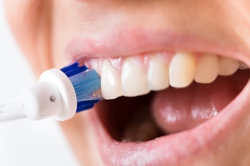 So you’ve decided between a rechargeable brush and a battery powered one and you’ve opted for the brush that can managed 20,000 strokes per minute, so you’re done, yeah? Well, actually, no you’re not. You see you also need to spend a bit of time considering which cleaning method will be right for you.
So you’ve decided between a rechargeable brush and a battery powered one and you’ve opted for the brush that can managed 20,000 strokes per minute, so you’re done, yeah? Well, actually, no you’re not. You see you also need to spend a bit of time considering which cleaning method will be right for you.
Rotating Brush
A lot of people tend to naturally opt for the rotating method of brushing when they brush their teeth manually, so a rotating brush head might be the one you’re most familiar and comfortable with. As the name suggest, these type of brushes have bristles that rotate around and around in a circular motion. Some brushes have bristles on different levels that rotate in different directions, thereby offering a more thorough circular cleaning motion to get your teeth sparkling.
Rotating-Oscillating Brush
This type of brush rotates and oscillates, meaning that the entire head of the toothbrush moves back and forth and around and around. The general idea is that you concentrate on one tooth at a time before moving on to the next one. In a really exciting move, some rotating-oscillating toothbrushes also pulsate! Be still your beating heart, hey? A non-pulsating rotating-oscillating electric toothbrush is targeting the removal of plaque, whilst adding the pulsation in allows it do remove plaque even more effectively.
Counter-Oscillating Brush
These toothbrushes work in a very similar way to the rotating-oscillating brushes, you may not be all that surprised to learn. But on a counter-oscillating brush you’ll tend to find different tufts of bristles rotate in the opposite direction from each other. To give you an example, one set of bristles might be brushing in a clockwise direction whilst the two sets either side of it are rotating in a counter-clockwise fashion. It allows the brush to make sure it has covered every bit of your tooth’s surface.
Dual-Headed Brush
Electric toothbrush manufacturers want to make sure that there is no stone left unturned in their search for the perfect toothbrush head. That is why they came up with the dual-headed toothbrush, a design that allows the head to rotate and move from side to side. Typically, there is a section on the front (or top, depending on how you want to look at it) of the brush head that sweeps from side-to-side whilst the circular set of bristles underneath it moves around and around. The idea behind this design is that it gives you a more thorough cleaning, though do be aware that the head of the brush will be bigger, so if you’ve got a smaller mouth you might not find it as comfortable to use.
Vibrating Electric Brush
An electric toothbrush that also vibrates? What more could you possibly want?! Don’t be confused, though, as more often than not vibrating toothbrushes don’t do the same circular oscillating motion as you might be more used to from traditional electric toothbrushes. Instead, they buzz against your teeth in a rapid fashion. They are designed to remove any leftover food particles, polish the surfaces of your teeth, and, most importantly, break up plaque. If you’re looking for a good range of toothbrush that has incorporated this vibrating feature then you’ll want to check out the Philips Sonicare range.
The Cleaning Mode
Now that you know what the various cleaning methods are the electric toothbrushes can produce, you can start to consider if there’s a special mode that might be helpful to you when you come to brushing your teeth. We all have individual needs when it comes to some things, so we’ll now have a quick look at the different modes on offer and what they mean.
Daily Cleaning Mode
This one is the most self-explanatory. It is a basic mode that is aimed at removing every day plaque and giving you a thorough, but simplistic, clean.
Polish Cleaning Mode
They are quite good with coming up with easy-to-understand titles, these toothbrush making companies, so it won’t come as much of a surprise that this mode is aimed at people that like to get a nice whitened look to their teeth. It helps to gradually make your teeth that little bit whiter and brighter, and it often takes advantage of polishing cups that have been inspired by dentists to help your teeth become whiter naturally.
Sensitive Cleaning Mode
Having said that these toothbrush manufacturers were good at coming up with easy to understand titles, this one is perhaps a little confusing. It isn’t that this mode is sensitive and won’t cause you any trouble when you use it, it’s that it’s aimed at cleaning and helping sensitive teeth and gums. Getting a sensitive toothbrush head will help you out here too, perhaps combined with speciality sensitive toothpaste. This is also the mode you’ll want to use if you’ve got kids. Just to clarify, use it on the kids, don’t just use it on yourself because you’ve got a child.
Massage Cleaning Mode
Sounds lovely, doesn’t it? This mode is aimed at people who tend to suffer from sensitive gums or problems such as gingivitis. It gently massages the gum line, helping them to get clean without also becoming irritated.
Deep Clean Cleaning Mode
This is more to do with the length of time you spend cleaning your teeth than it is to do with anything special the brush itself does to help. The longer you spend brushing, though, the more chance that you’ll get all of those hard to reach areas and ensure a deeper, more effective clean.
Special Features
There are some other factors that are worthy of your consideration when you hit the shops. They’re not exactly crucial to the operation of the brush, though, so we won’t bother breaking these down too much and we’ll just talk you through them quickly.
- Battery Indicator Light – Will tell you when it’s time to replace the batteries or go on charge
- Ergonomic Grip – You use your toothbrush for a fair amount of time, all things considered, so a grip that will be comfortable to hold is vital
- Noise Reduction – Some toothbrushes have the ability to be quieter than others. Important if you live with a mouse or in a nunnery
- Pressure Sensors – Knowing if you’re pushing your brush too hard on your teeth is important, especially if you’ve got sensitive gums. Some models have a light that comes on when you’re applying too much pressure
- Timer – Some brushes make a bleeping sound stops working briefly every thirty seconds so you know when it’s time to move to a different quarter of your mouth. Others simply turn themselves off when you’ve been brushing for two minutes
- Case – Some electric toothbrushes come with a case to help protect the brush and aid you when you’re moving it around. Ideal if you tend to travel a lot
- Ultraviolet Sanitiser – These are often found in the high-end models and comprise of a built-in sanitiser that kills bacteria and viruses whilst your toothbrush charges
One for the Kids
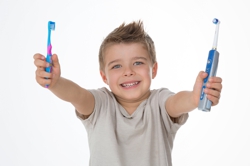 This is a specific section, this, so feel free to skip on if you haven’t actually got kids. If you have got a little tyke running around the place then you’ll know if can be hard work getting them to brush their teeth at the best of times. It is important that they do, though, so we’ll give you a quick summary of what to look out for.
This is a specific section, this, so feel free to skip on if you haven’t actually got kids. If you have got a little tyke running around the place then you’ll know if can be hard work getting them to brush their teeth at the best of times. It is important that they do, though, so we’ll give you a quick summary of what to look out for.
Unlike with adult brushes, children’s electric toothbrushes are aimed specifically at dealing with a smaller, more sensitive mouth. That means that some of the features that you could spend ages considering when looking at a brush for a grown become either irrelevant or more relevant when looking at a brush for a child, depending on the feature.
One of the key things you might not consider when looking for your own toothbrush is the size of the handle and the size of the brush head. The brush head is often smaller to make it easier to reach more difficult places, whilst the brush handle is shaped in such a way that it’s easier for kid’s to hold for long periods of time.
Softer bristles are also to be found on some brushes, and they’ll also more than likely be rounded on the end. This means that if your child presses too hard with their brush they are less likely to damage the enamel on their teeth or hurt their gums. The point of electric toothbrushes is that the oscillation or vibration of the brush heads does the work so you don’t have to. Having slightly softer bristles helps to keep things simple and stops children from getting too carried away with their brushing.
Exciting colours and themes can also make electric toothbrushes more appealing to children. You can pick up brushes that are covered with Disney characters, for example, or the Avengers. The natural appeal of more exciting and interesting colours and things will encourage your child to use their brush, and anything that can help to build better brushing habits can only be a good thing.
The final thing to bear in mind when you come to go shopping for a child’s toothbrush is the power level that it has. Where you might think of getting the most powerful brush you can in order to ensure the successful break-up of plaque, a child’s brush needs to have a more appropriate power level to ensure their teeth or gums are not damaged during the brushing.


